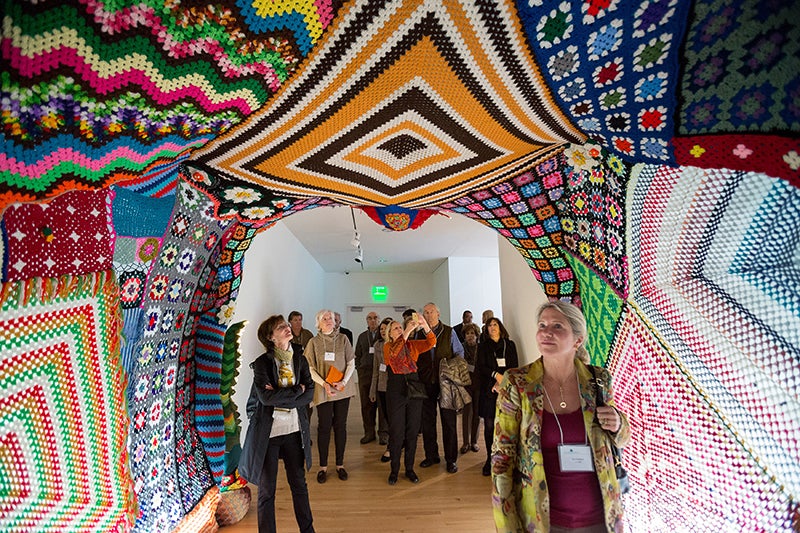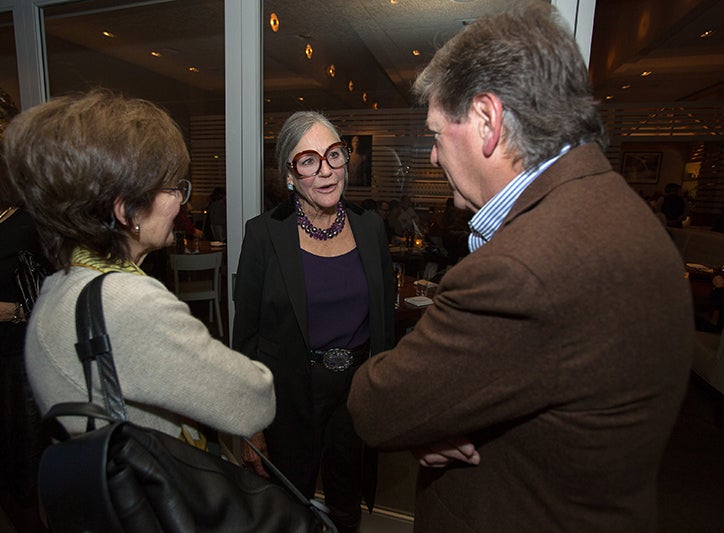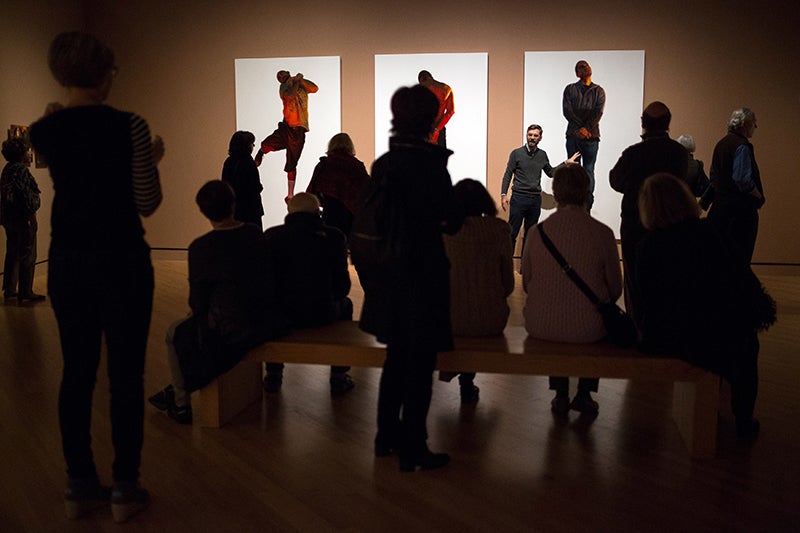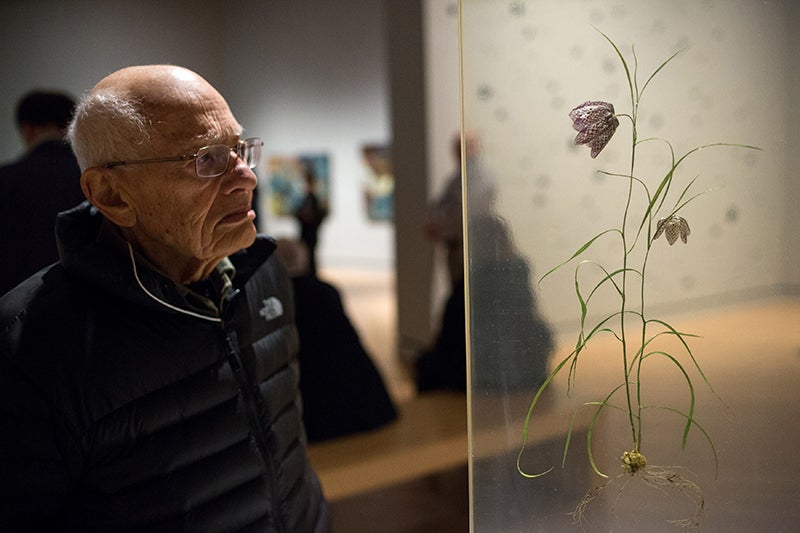
Aspen Across America Bentonville guests experience the work featured in the State of the Art exhibition (Photo Credit: Marc Hemming)
Aspen Across America (AAA) provides a forum for civil, nonpartisan dialogue to promote the level of discourse the nation deserves. Through thoughtful and challenging exploration of the most significant problems of today, the program works to promote re-examination of ideas that cultivate the ideals of a good society. Below, Aspen Across America Director Eric L. Motley shares insights from the program’s inaugural trip to the Crystal Bridges Museum of American Art.
Three weeks ago, I took a group of Aspen Institute friends who had gathered from all across the country to make a 24-hour excursion to Bentonville, Arkansas, to visit the museum that benefactor Alice Walton has founded and given to America. Crystal Bridges Museum of American Art, founded by Walton and designed by Moshe Safdie, is now acknowledged as an important feature of the American cultural landscape.
Since opening in 2011, the museum has attracted visitors and considerable attention for both its permanent American masterworks as well as its collection of contemporary works by living artists. The steel-and-glass building attests to its architect’s attentiveness to the linkage between art and nature. As our visiting group, made up of art curators, designers, and scholars, walked through the museum, Walton challenged us to engage with her in a larger conversation, not just about what we saw on the walls, but about the role of the museum in contemporary society.

Alice Walton in conversation with Marilyn and Michael Glosserman (Photo Credit: Marc Hemming)
Walton unraveled a vision of how the museum could become an active incubator for innovation and creativity, and how new tools could be applied to teach the timeless lessons not only of art, but of history, mathematics, chemistry, biology, and language, as well. She summoned us to appreciate the natural beauty of the Ozarks outside the window as much as we admired the majesty of Albert Bierstadt’s framed landscape hanging on the wall. These two wonders, from the world of nature and of art, respectively, seemed to comment on and to complement each other.
In the distance I could hear a curator pointing to a painting while telling a little boy, “You live in a green wooded place just like that.” His eyes widened as if he had spotted himself in the painting. Our eyes were also opened as we were reminded of the critical role that a museum plays, whether located in a city center or in the rural landscape. To remind us that we need not travel to New York, Chicago, or Washington, to see great art.

Crystal Bridges Curator Chad Alligood discusses featured works with AAA Bentonville guests (Photo Credit: Marc Hemming)
Walton brought art to Arkansas and created a fund to allow schoolchildren from all across the state of Arkansas to view it free of charge. Moreover, the fund covers the costs of buses, chaperones, and lunch. As she said, “I want every kid to be able to afford this experience,” I looked out the window and saw little kids playing on the great green grassy knoll where no doubt Walton kids once played. Then I turned and saw a teacher with a curator before a class of students staring at a work by John Singer Sargent; how wonderfully moving.
A long time ago, when I was a small child in elementary school in Montgomery, Alabama, I took what has proven to be a life-changing class field trip to the Montgomery Museum of Art. A very wealthy arts philanthropist by the name of Red Blount had donated much of his personal collection to the museum, and years later, while in high school, I was able to say thank you to the then-richest man in Alabama, who helped to inspire my love of art. It was on that long-ago school trip that I first encountered the artistic signature of Sargent — his alluring broad brush strokes lifting paint from canvas — and the effect captivated me. Perhaps outside of nature I had not until that point experienced such singular beauty, and all these years later, Sargent’s influence has never left me, nor has my gratitude for those who support the arts.

Artist and Aspen Institute Society of Fellows member Lee Lyon (Photo Credit: Marc Hemming)
Eric L. Motley, Ph.D., is vice president of the Aspen Institute and executive director of national programs.

